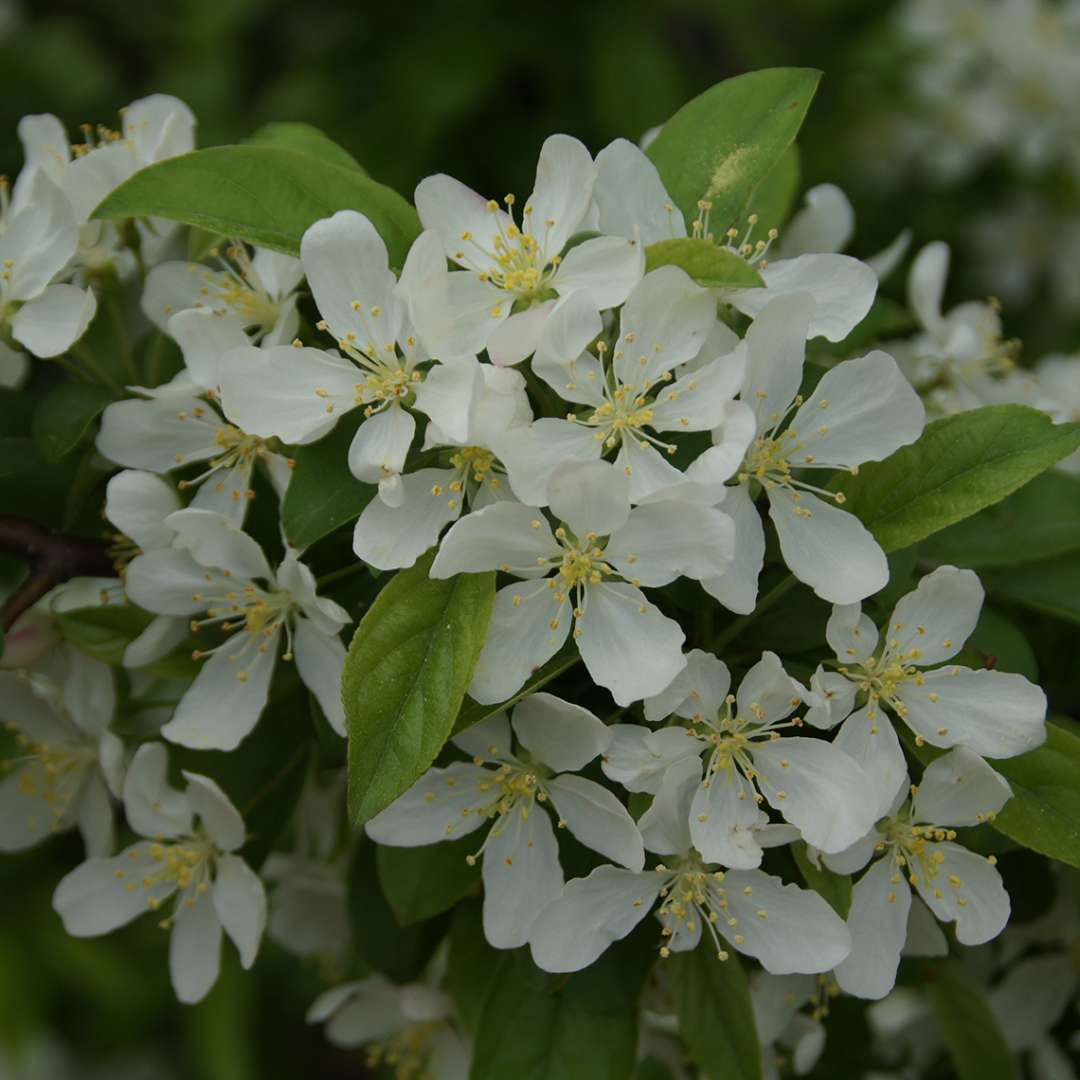

Spring pruning should be avoided as it produces fresh, open cuts where fireblight bacterium can enter. Although some flowers may be lost, it is best to prune this tree as needed in late winter.B&B - Although it is not essential for B&B to be pruned after planting, a light pruning for shape, to remove any broken branches from shipping, or to thin out a heavily branched plant will help in the transplanting process and in the appearance of your new planting.All pruning should be done with a sharp pruning shears. Pruning should occur either before or as soon after planting as possible. Bare Root - Prune ALL bare root plants to reduce transplant shock and ensure success.Add mulch on top of soil making sure to not put mulch against the trunk or stems.The top of the root ball should be visible and slightly higher than the soil around it.Fill the hole to the top of the ball with soil, then soak well with water and let settle.Lastly, remove exposed burlap from top of ball Then, remove or bend back top ? of metal basket. Once the tree is straight and located as desired, cut and remove twine.Backfill ½ of the hole with soil and completely saturate the soil with water.Place fertilizer packets into the bottom of the hole (if purchased).If necessary, add soil under the ball so the root flair is exposed. This root flair should show when the tree is planted. Notice where the base of the trunk flairs out from the tree.Dig a hole at least 6" wider and no deeper than the size of the ball on the plant.If a hard frost is expected be sure to hold off on planting. A good indicator if you can still plant is if the ground is still workable you’re good to go. See our link below “Handling & Planting Guidelines” for illustrations on planting.Back fill the balance of the soil and water well.Re-adjust plant and fill the hole with the rest of the soil.Spread the roots and fill halfway with soil, then water until soil settles completely saturating the soil and planting pit.Do not place other fertilizers in the planting hole. Place fertilizer packets in hole (if purchased).Trim off the broken roots and branches.The crown or graft of the plant should be slightly higher than ground level where it was grown at the nursery. Dig a hole at least 6" wider and the same depth as the root mass.Scroll down to an orange rectangular box and click on “Handling & Plant Guidelines” for illustration on planting each of these types.All bare-root plants must be trimmed when planted. Each plant type will be labeled separately for identification. Soak roots in buckets of water until planted. Bare Root - Cut open the bundle (top and roots are tied) and separate all the plants.Be sure to space plants 10 to 20 feet apart, depending on the expected mature size of the variety.Plant as a specimen/accent or in small groups.Established trees have some drought tolerance.
#Crabapple sugar tyme full#
Best grown in medium moisture, well-drained, acidic loams in full sun.Toxic to dogs, toxic to cats, toxic to horses.Require only minimal pruning in late winter, to remove damaged, diseased or misplaced growth.Perfect as a specimen plant, in city gardens or cottage gardens.Once established, it is drought tolerant. A full sun lover, this tree is easily grown in moderately fertile, well-drained soils.A beautiful flowering crabapple tree that is disease resistant and looks spectacular all year long. Equally attractive is the crisp foliage of glossy, rich green ovate leaves, which becomes bronze-yellow in the fall. (1.2 cm), that remain on the tree all year (unless the birds eat them!). The showy blossoms are followed by abundant, radiant red fruits, 1/2 in. Draped in clusters along the branches, they are truly a sight to behold. Opening from pale pink buds, masses of sweet-smelling, pure white flowers appear in mid-spring. Malus 'Sugar Tyme' is an upright, oval, deciduous tree with a long season of interest.


 0 kommentar(er)
0 kommentar(er)
